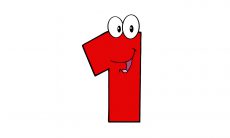1. Hello, Bob! Can you please describe your professional background? How has your education and career brought you to where you are now, a leader in social media strategy?
I am the Director of Social Media for the Harvard Business School Office of Alumni Relations. Before working at Harvard, I worked in communications for the Boston YWCA and Tufts University Graduate School of Arts and Sciences.
It was in the graduate school office at Tufts that I started working in social media. At that time, social media was one of a number of areas I covered in the job. I started with Twitter after researching how other institutions were using it. Strategies for list-building with alumni and influencers dovetailed with ones for engagement and content sharing of higher education topics and rich curation. Next I launched a blog. Starting from scratch, I coaxed subject matter experts to respond to sets of questions over email and turned their responses into blog posts. My work for Tufts expanded to other networks like LinkedIn and Flickr and then I moved on to my current role at Harvard Business School. In this role I solely focus on social media for alumni relations.
2. Describe your role role at Harvard Business School. How has social media influenced the daily work of the Office of Alumni Relations?
When I took the role at Harvard, I started by figuring out who our social followers were and came up with a way to communicate with our alumni in meaningful ways. The goal was (and is) to create connections not only between the Harvard Business School Alumni Office and our alumni, but to create connections between alumni as well. This is one key role that alumni relations offices can play in higher education and one I decided to attempt using social media. We use Twitter, Facebook, LinkedIn and Instagram to connect with our alumni around the world.
I’ve found that social listening is a great way to find out what our alumni are talking about. One great example was the 2016 World Series; I was listening for mentions of the Chicago Cubs from our alumni. When I found these posts, I would RT them, share related content and photos, and mention other alumni who were also Cubs fans. Then I’d step out of the way and let these alumni carry on their own conversation. I created a list of alumni who were Cubs fans and tried to connect with each one of them.
This was a manual process, but it helped me make sure I was connecting with as many alumni as possible in a relevant, fun, and meaningful way. I discovered that Harvard Business School was started the same year the Cubs last won the World Series, and then I created a video that focused on this theme of how far we’d come over the time period and celebrated the Cubs win at the same time.
In my work, I listen to the topics our alumni are speaking about over social media and insert our voice where we can bring value. When I discover someone speaking about something of interest, I will look for another alumni who has a similar interest or works in the same industry or region, then I connect these two alumni. This personalized approach gives me unlimited opportunities for engagement. We celebrate their work and help them build their own networks among the Harvard Business School community, which includes about 80,000 people.
3. How are you measuring the success of your social media strategy?
Through our personalized approach to social media, ROI is tough to gauge. Our goal is to get to know our alumni as individuals. We want to make our alumni feel more connected to us and more connected to each other. We’re bringing in engagement, which we hope will lead to more participation with the institution. We’re driving web traffic and awareness of our work as an alumni organization. All of this is associated with positive outcomes. We try to bring value to conversations they are having and to build connections between them. We receive positive feedback about our work on social media, but most of it is anecdotal at this point. In the future, I am planning a more deliberate approach to discover ways to measure social media’s impact on, for example, event attendance.
4. What is the unique role social media plays in the customer journey at your organization?
The real time nature of social is unique. At reunions and other events—alumni who can’t be there live can see what’s happening over social media. They feel connected to the event and to us. Our alumni community is worldwide.
We have programs like Take an Alum to Lunch Day, which are communicated effectively using social media. For this program, we asked alumni to take selfies together to share back with the community. This really made this global alumni networking program come to life. The immediacy of the social media connection and worldwide reach is so unique. As a result, engaging in quick, casual conversations with alumni helps us build connection every day across the world. Social media facilitates this in a way no other media can.




